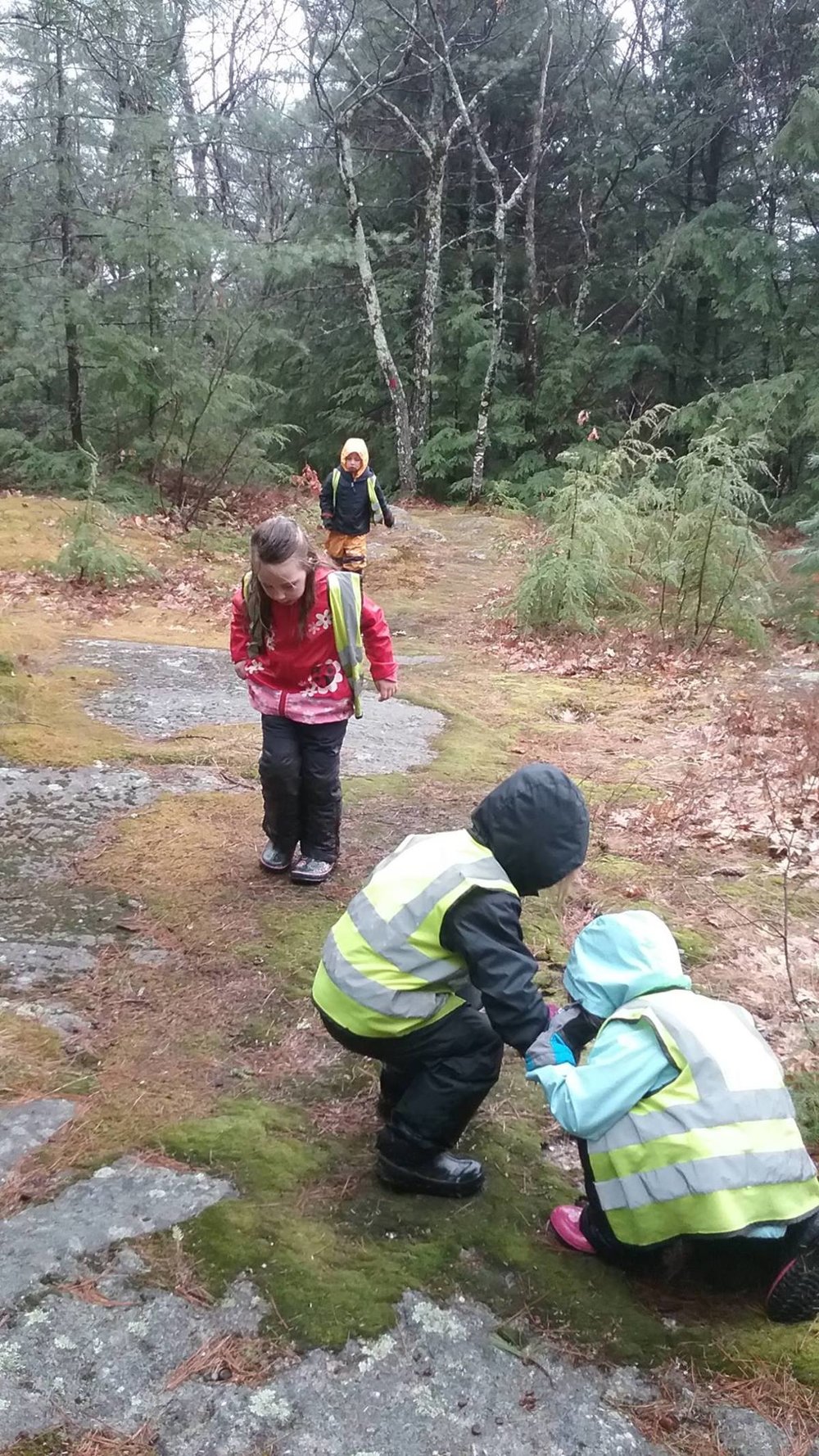Notes from the Naturalist: A Special Outing with the Older Children!

Under a light rain we entered the woods and found a world full of exciting finds. Any good scientist will tell you that in order to find out the why and how of what is going on is through observation. Over the last couple of weeks the children at HCMA have been working on honing these very important skills. Soon after entering the woods we stopped to notice a change in the forest and from that observation, we quickly recorded many more interesting finds.


We hiked past the Slim Baker Lodge and descended down the Stephens Trail about 300’ and noted our first observation. Reading the forested landscape is important in recognizing changes within that given landscape. We observed a change from a deciduous or hardwood forest type to a coniferous or soft-wood forest type. We recorded that we could see oak leaves on the ground and a very open canopy (at this time of year) and yet looking ahead we noticed that the Hemlock forest looked very dark in comparison and the ground beneath it was bare with no leaves. Noticing forest type is a great skill for children as it will soon become an indicator for them to look for different species that grow or inhabit each different eco-tone.
“An ecotone is a transition area between two biomes. It is where two communities meet and integrate. It may be narrow or wide, and it may be local (the zone between a field and forest) or regional (the transition between forest and grassland ecosystems). An ecotone may appear on the ground as a gradual blending of the two communities across a broad area, or it may manifest itself as a sharp boundary line. The word ecotone was coined from a combination of eco(logy) plus -tone, from the Greek tonos or tension – in other words, a place where ecologies are in tension”. -wikipedia.org
Our hike took us off trail and up the spine of Little Round Top Mountain. We explained to the children that we were in fact “Bushwacking”. We explained that off-trail hiking is something you only do with an adult who has a map, compass and a great sense of direction. This brought us to the very important discussion of being lost in the woods. As set forth by the New Hampshire Fish and Game Department, we instructed the children to “Hug a Tree”. The “Hug a Tree” method should be talked about with our children each time we venture out into the woods. When a child hugs a tree, it limits their movement and reduces the chances that they wander further away from the location of where they were last seen. If a child has a whistle attached to their backpack or jacket they are to blow the whistle to attract attention. Sometimes children will clam up and not respond when lost because of the fear that they are in trouble. We explained to the children how very much their parents, family and teachers love them and if they ever find themselves lost in the woods to know that they are not in “trouble”.
As we continued up the spine of the mountainside and before we reconnected with the trail, we found many signs of White Tailed Deer. Deer scat was everyone and in fact we found not only a deer trail, but an area of broken hemlock branches where deer had chewed on and broke off the tips of the branches. One of our very observant students also spotted deer fur on a tree, where perhaps they had rubbed up against the bark. And of course, since it is that time of the year again, please take the time to check your children from head to toe in search of ticks. Deer ticks are in fact very small – as in the tip of a pen small! Do not assume that since you were not in an area common for ticks that you can forgo the search. Make it a daily habit from now until the snow flies again.